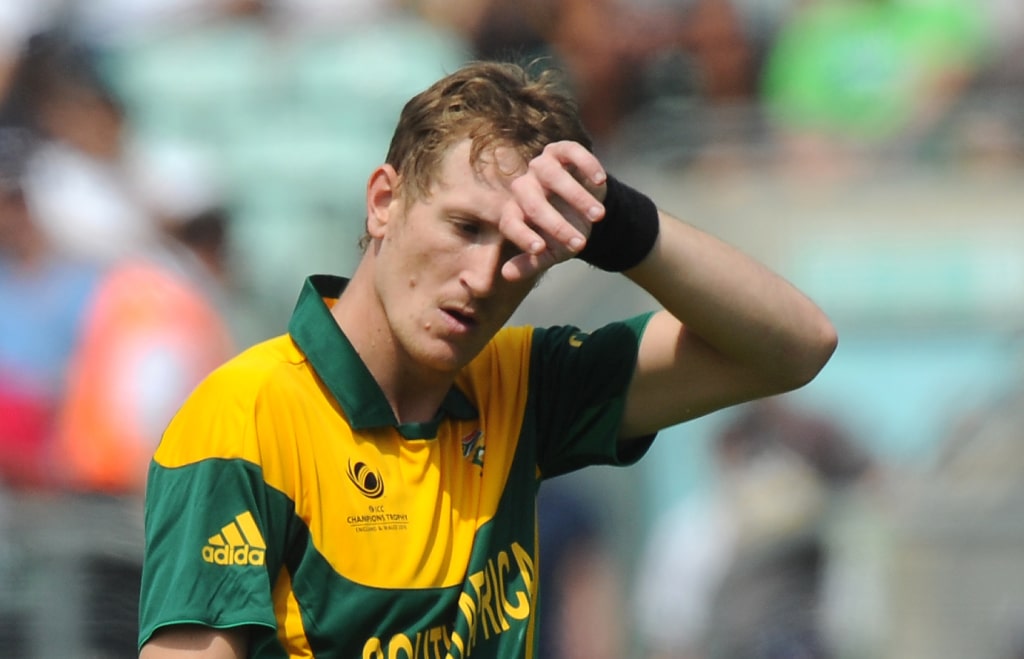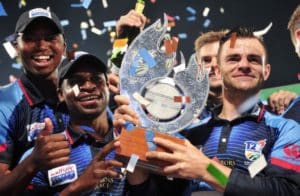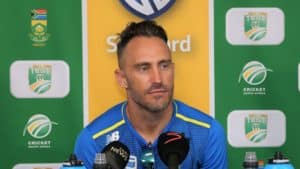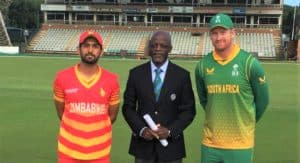The ODI series finale in Auckland should provide the South African attack with a shot at death-bowling redemption.
The defeat to New Zealand in Hamilton marked the Proteas’ second loss in 15 ODIs. It’s fair to say that New Zealand have demanded more of South Africa’s skills and resolve. It’s been a good test for the Proteas as they build towards the Champions Trophy in June. It’s highlighted where they are strong and where they are still vulnerable.
Much has been made about their mercurial batting performances. Following the recent loss in Hamilton, skipper AB de Villiers declared himself satisfied with the Proteas batting lineup. Indeed, the fact that the Proteas bat all the way down to No 10 has offset the absence of substantial partnerships in the top order. For now.
The biggest concern – in the buildup to the final in Auckland, as well as the Champions Trophy that follows – is the state of the attack. South Africa lack experience in this department and have been exposed, especially in the latter overs when opposition batsmen have looked to put their collective foot to the floor.
The attack has been without senior players such as Dale Steyn, Morné Morkel, and Vernon Philander. In the match in Christchurch, which ended in defeat and marked the end of South Africa’s 12-game winning streak, the Proteas were without another key bowler in Kagiso Rabada.
Steyn won’t be available until the Test series against England later this year. There’s a chance that Morkel and Philander will return for the Champions Trophy. Rabada will, however, spearhead the attack when the Proteas go searching for a series clincher in Auckland.
The bowlers will enjoy one more opportunity to impress in what should be a high-pressure environment at Eden Park. Those who have struggled for consistency in the first four matches would do well to make the chance count.
South Africa dominated the third ODI in Wellington with bat and ball. After the batsmen posted 271, the bowlers combined to dismiss New Zealand for 112 inside 33 overs. On that occasion, every one of the five bowlers contributed with wickets and conceded fewer than six runs per over.
However, it should be noted that New Zealand’s innings was done well before the 40th over. So while the Proteas bowlers must be commended for making short work of the Kiwis in Wellington – indeed, one could not argue with the abilities on attack to consistently bowl out opponents inside 35 overs – it cannot be said that they passed the test or alleviated the doubts about their death-bowling prowess.
The Proteas won the first ODI in Hamilton, despite conceding 86 runs in the final 10 overs of New Zealand’s innings. The visitors leaked 89 in the final 10 in Christchurch, and 46 in the final five of the recent clash at Seddon Park.
South Africa claimed two wickets at the death of the first ODI, 0 in the final 10 in Christchurch, and two in the final five of the fourth game. They’re failing to apply sufficient pressure towards the close of the innings. Wickets are often what keep batting sides relatively honest in the final 10 overs. At the moment, the Proteas are battling to make enough run-curbing breakthroughs.
Rabada has done well as a death bowler for South Africa in recent times. When used in that role in New Zealand, he has not disappointed. Rabada bowled four of the final 10 overs in the first ODI and conceded 21 runs. One of those overs was a maiden.
Unfortunately, Rabada hasn’t received much support at the other end. De Villiers has experimented with his death options across this series and is yet to find a viable alternative.
The Proteas attack struggled in the second ODI in Christchurch when Rabada wasn’t available. Not one among Chris Morris, Wayne Parnell, Imran Tahir, and Andile Phehlukwayo managed to keep the score down or to claim a wicket that may have checked New Zealand’s charge.
Morris has picked up some key wickets this summer, but what has become more and more apparent is that he is not suited to bowling at the death of the innings. After taking four wickets in his initial spell of the first ODI, Morris came back at the end and was duly smashed around the ground. His death-bowling track record in this series doesn’t make for encouraging reading (38 runs conceded in two overs in the first game, 19 in three overs in the second, and 10 in one over in the fourth).
Experienced players such as Parnell and Tahir have not been much better. Parnell went for 22 in two overs in the second match, and 15 in two in the fourth.
Tahir, who went into this series as the world’s top-ranked limited overs bowler, went for nine in one in the first game, 19 in two in the second, and 21 in two during the final five overs of the fourth. It’s worth noting that these games were played on slow pitches and that scoring runs was not always easy.
New Zealand will go into the fifth ODI with confidence and momentum. Like South Africa, they also bat deep. They will know that, aside from the clash in Wellington, the Proteas have battled to take wickets on the New Zealand tracks and that the visitors are particularly vulnerable at the back end of the innings.
Who will De Villiers throw the ball to at the death? Rabada has shown that he has the skills as well as the temperament to rise to the occasion. That bodes well for the Champions Trophy. What is less certain is who will partner Rabada in those game-shaping moments in the finale in Auckland and in the crunch games of the all-important knockout tournament.





